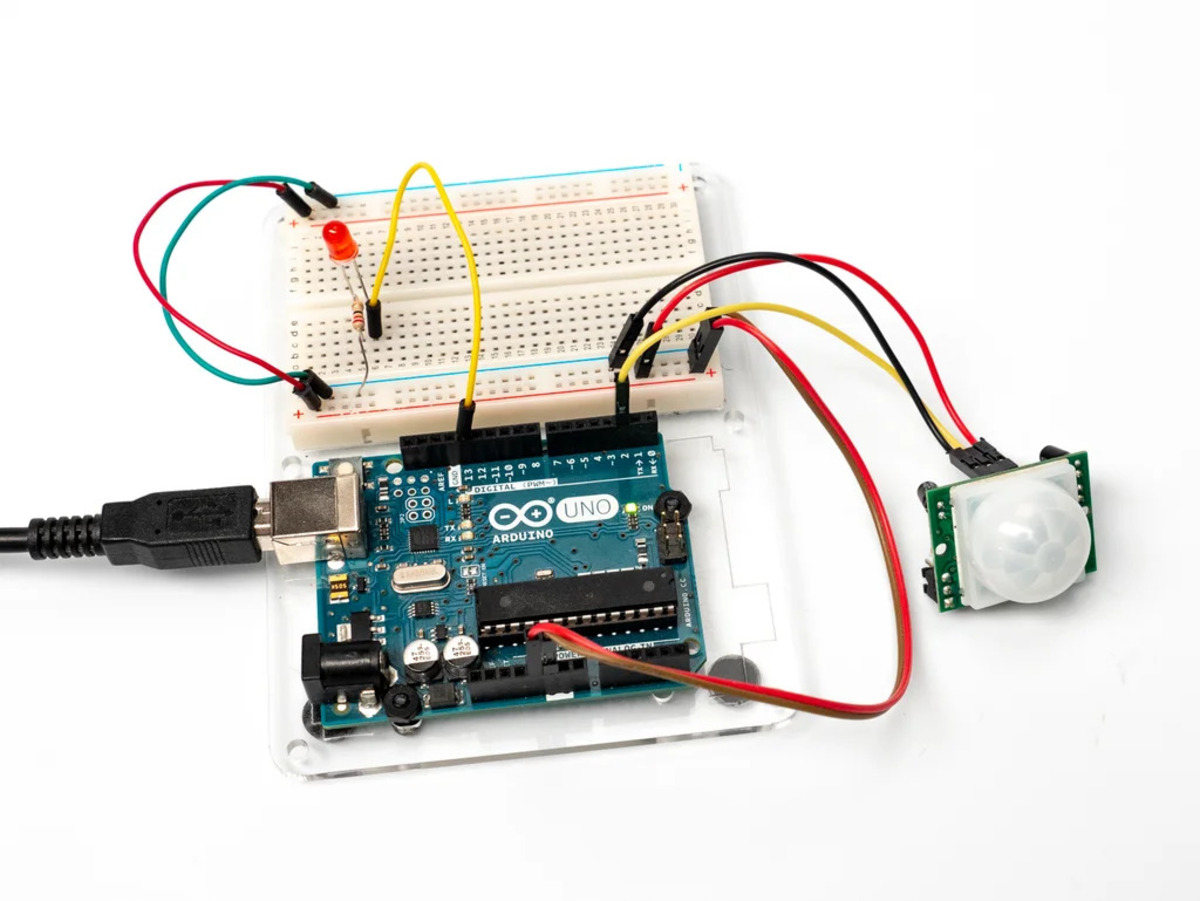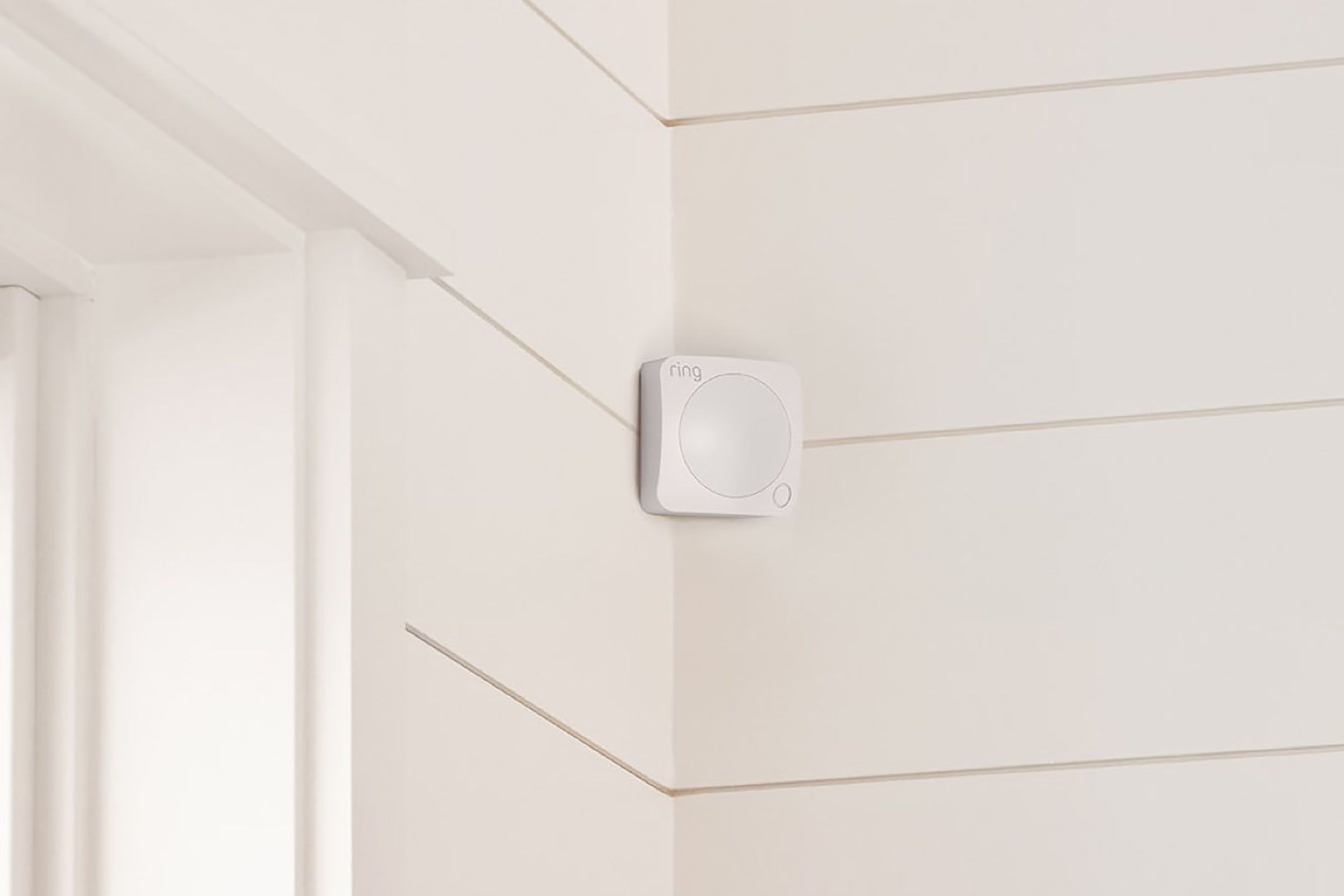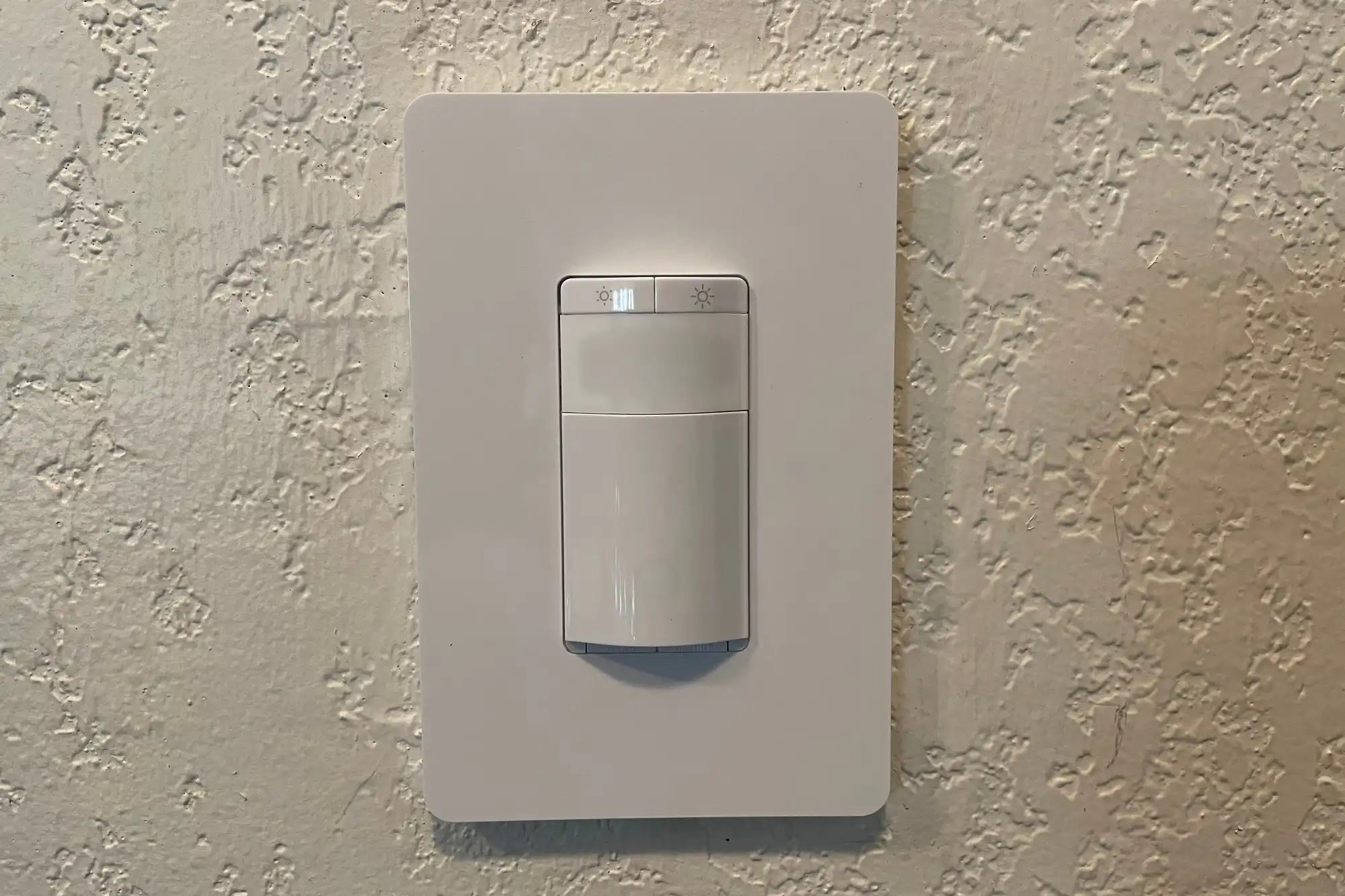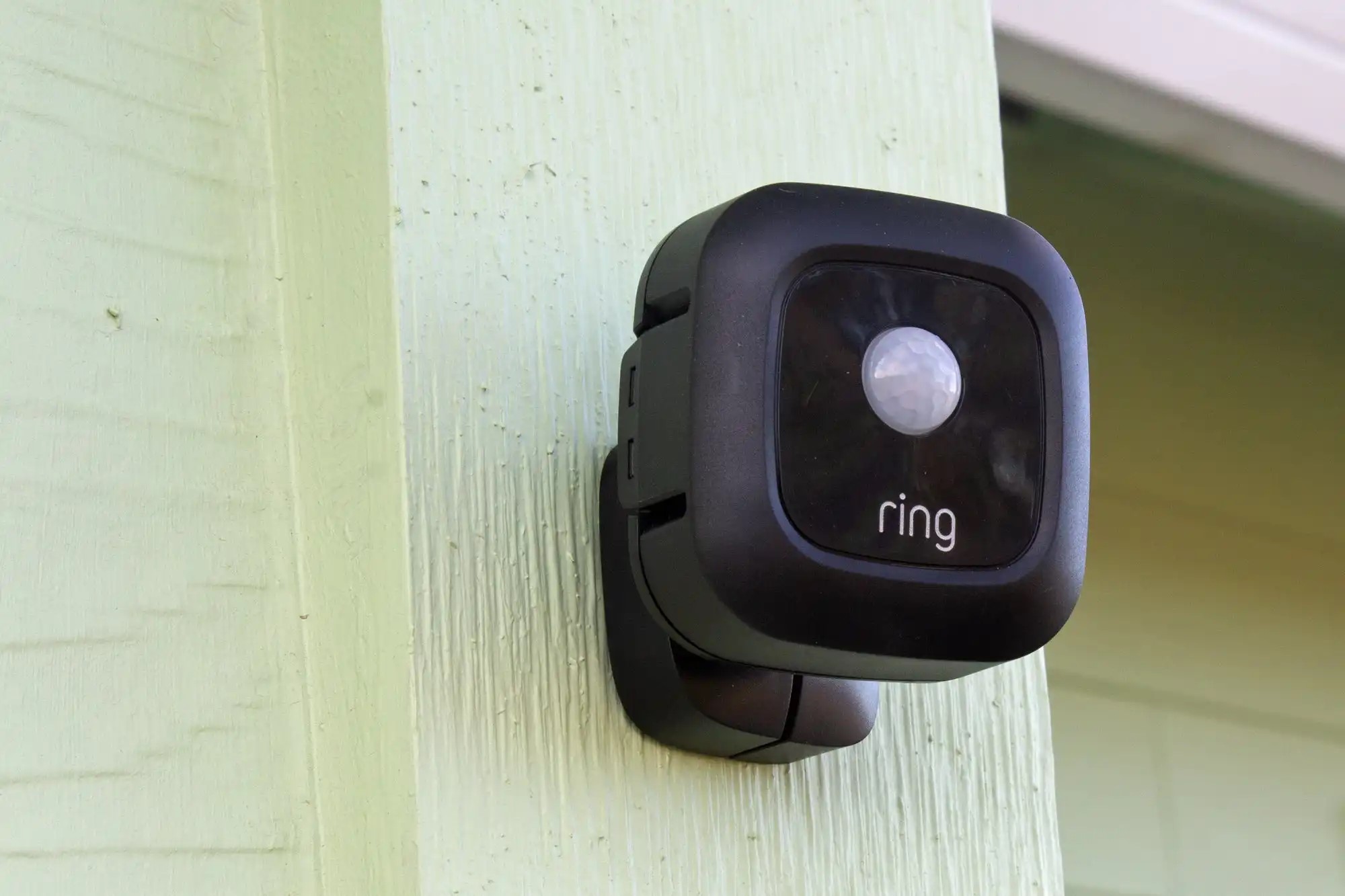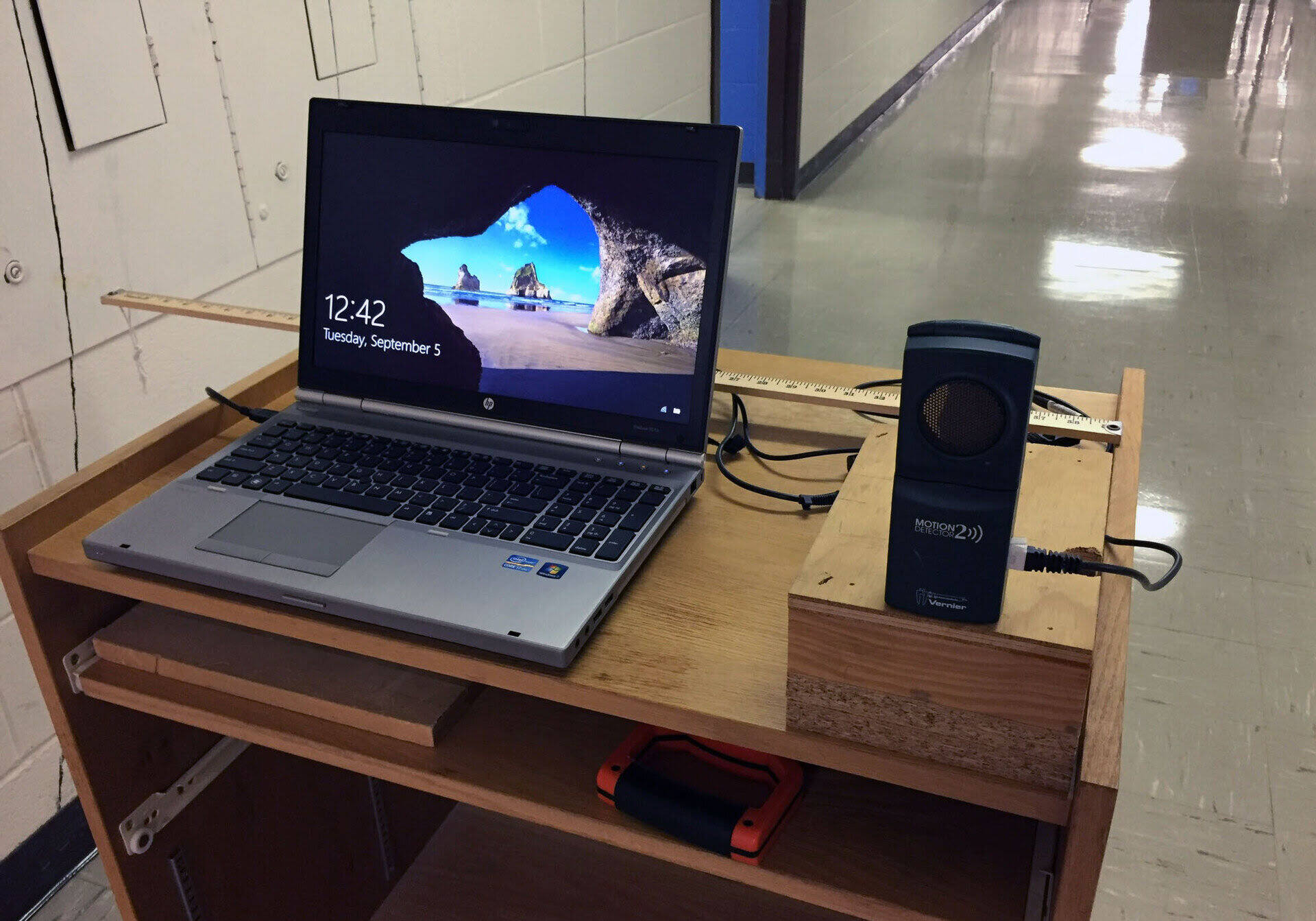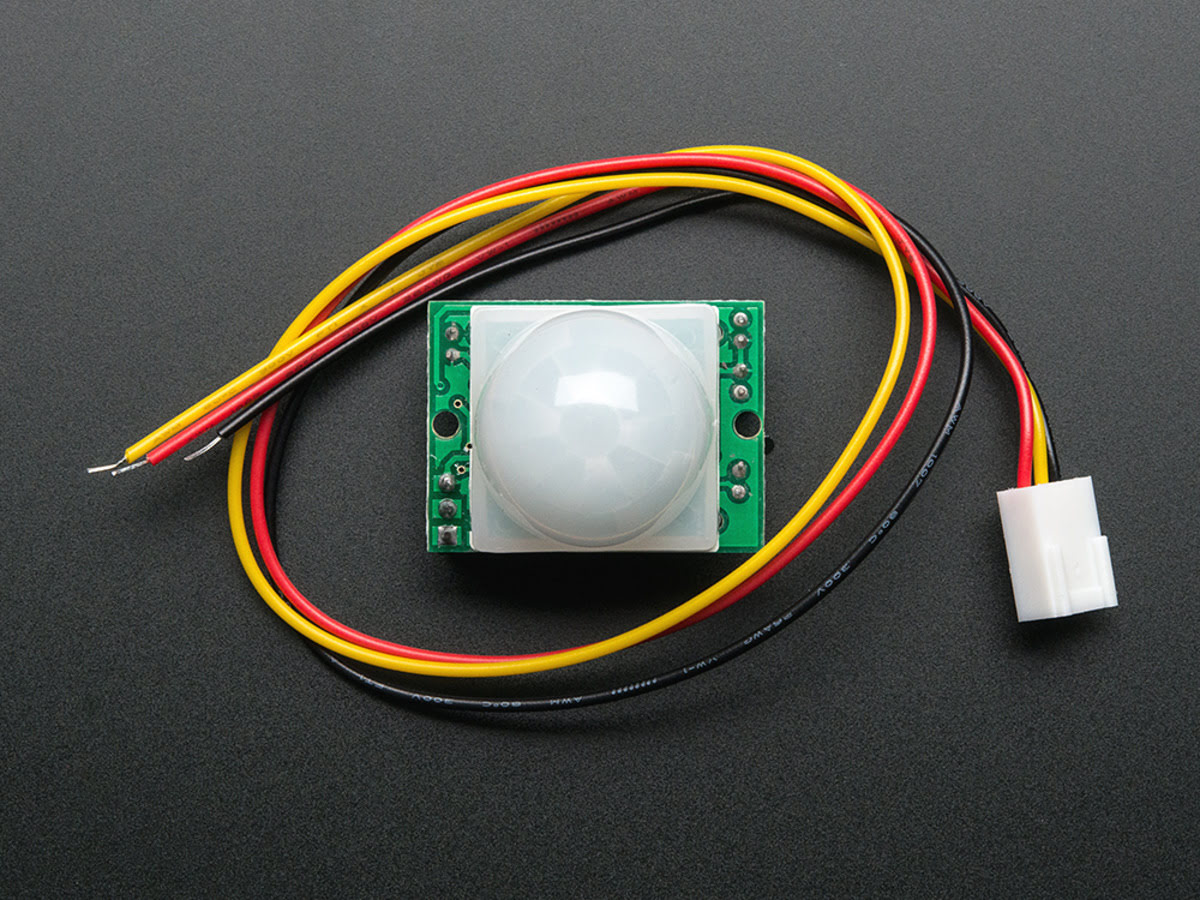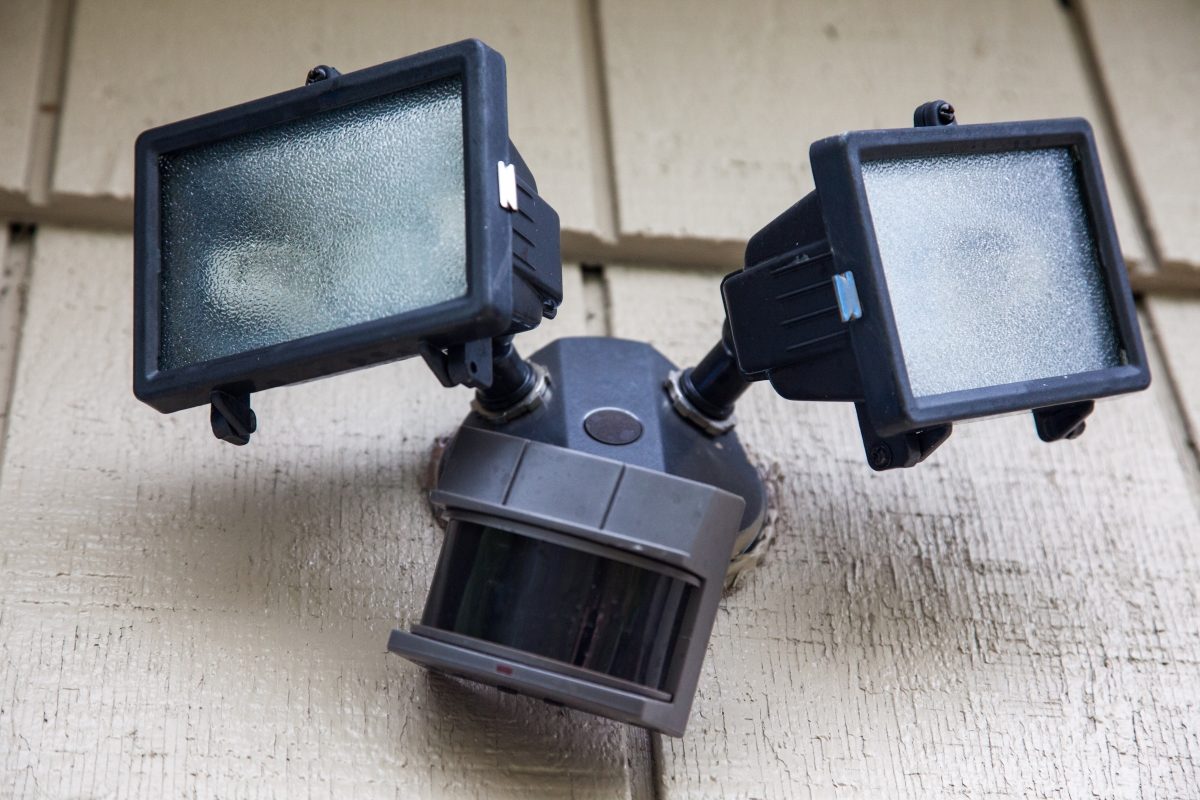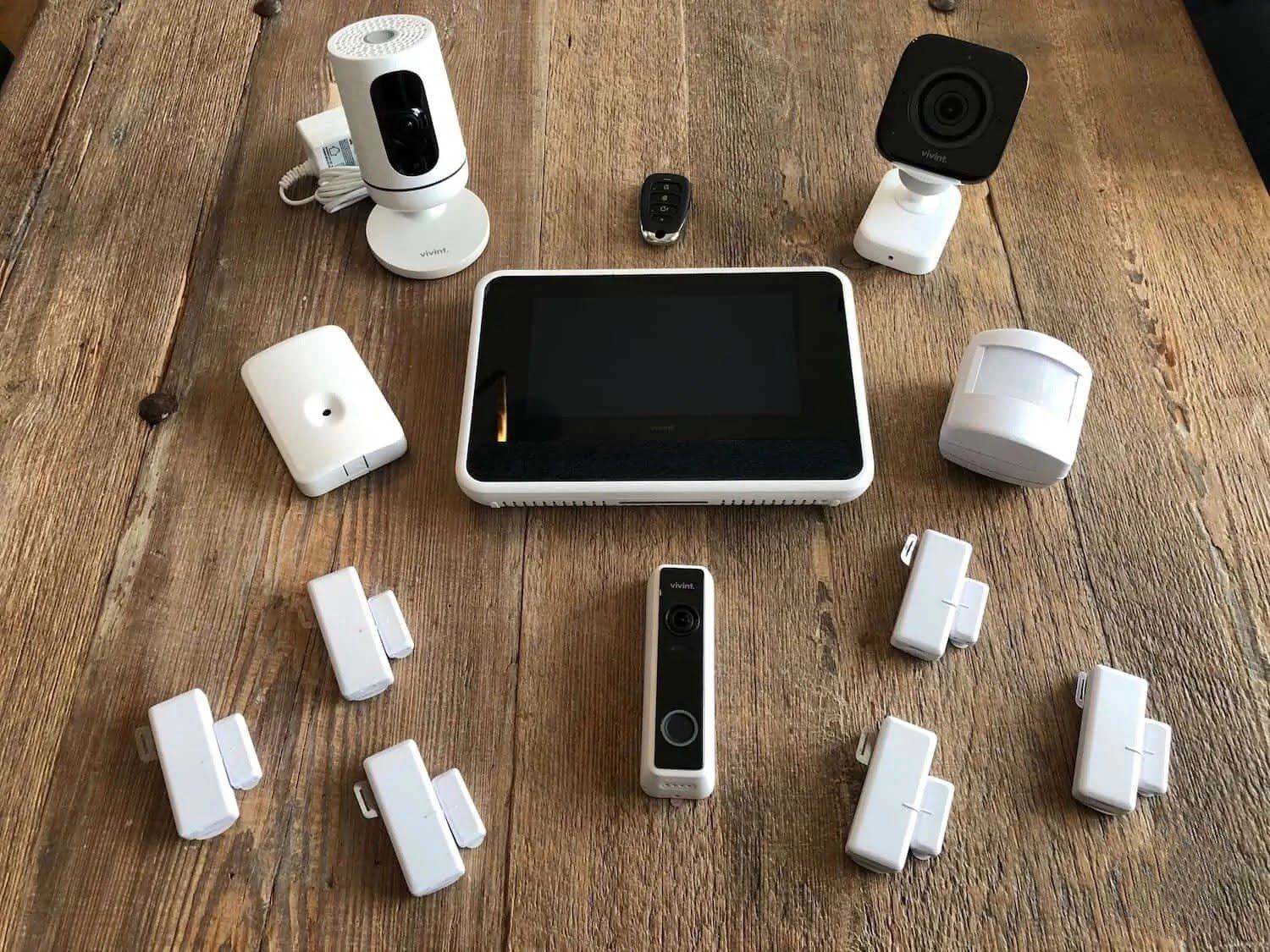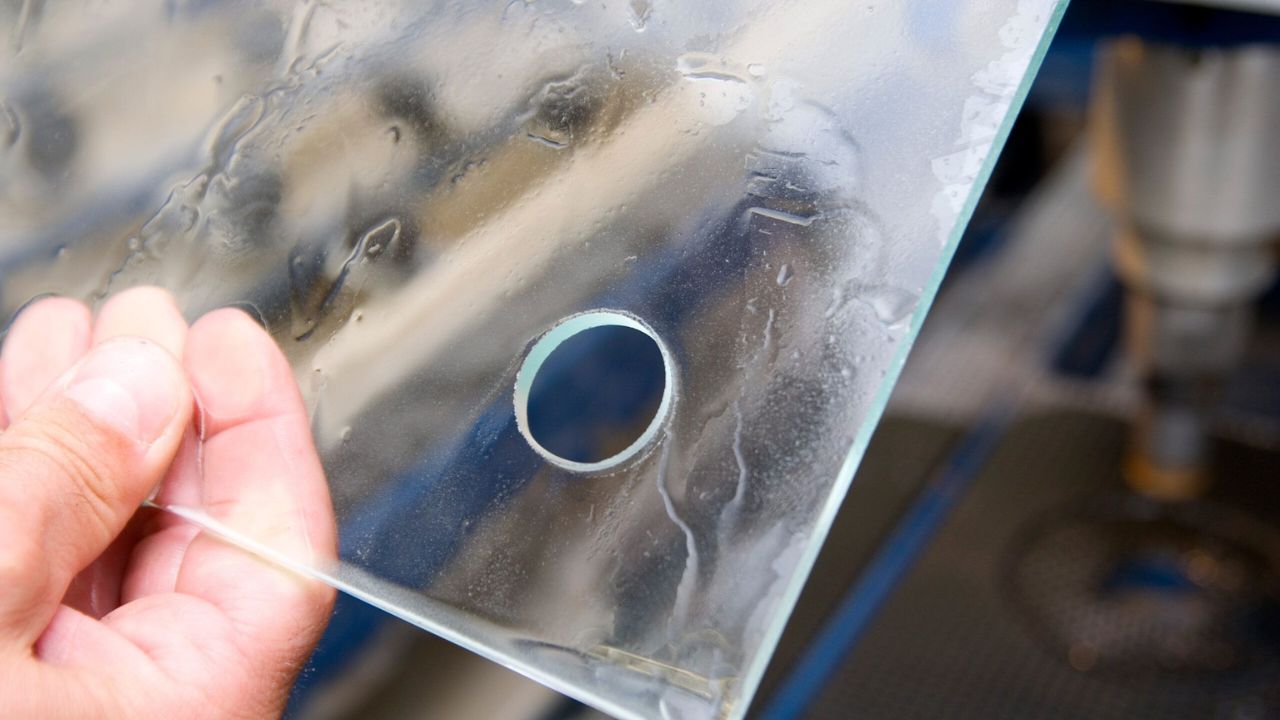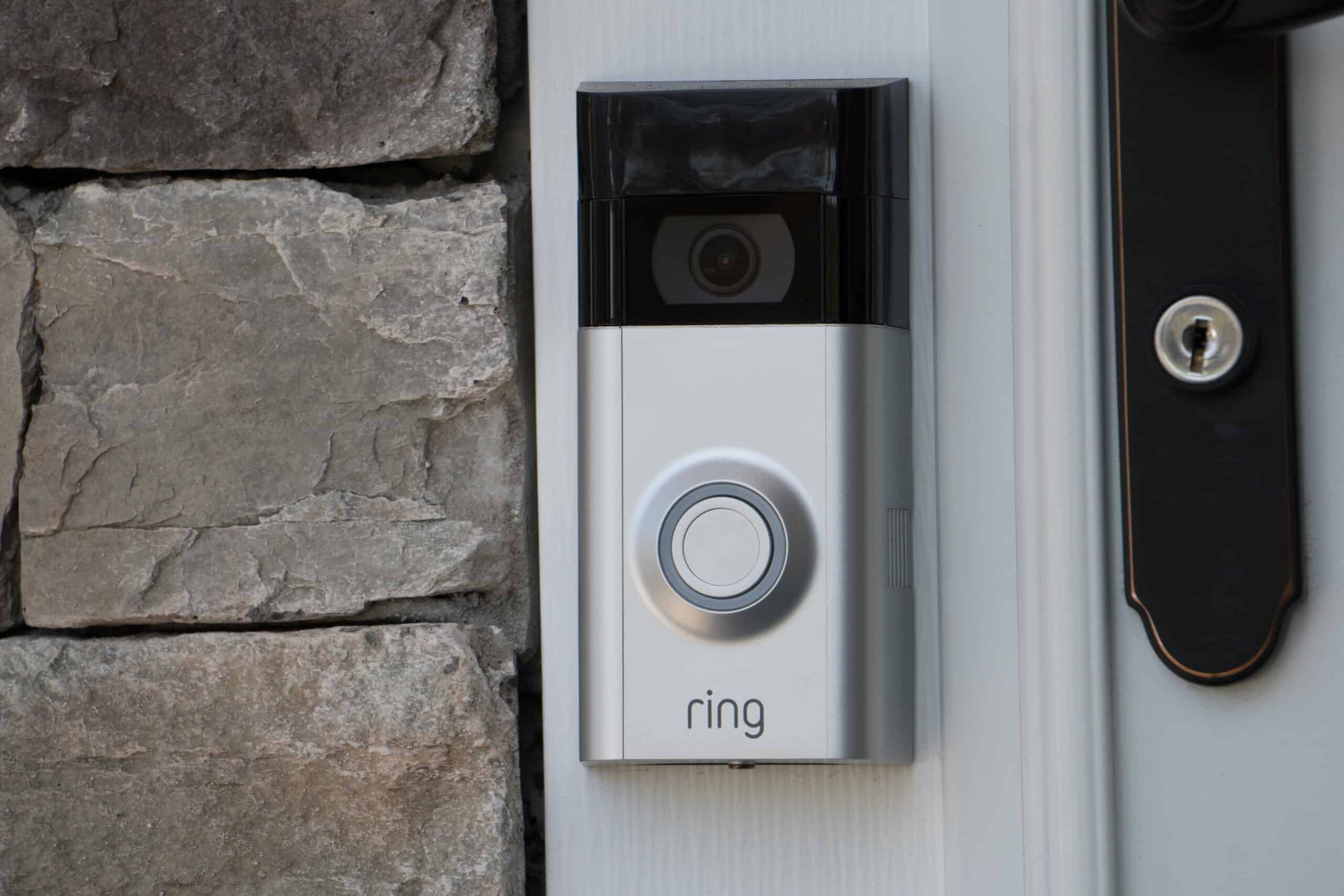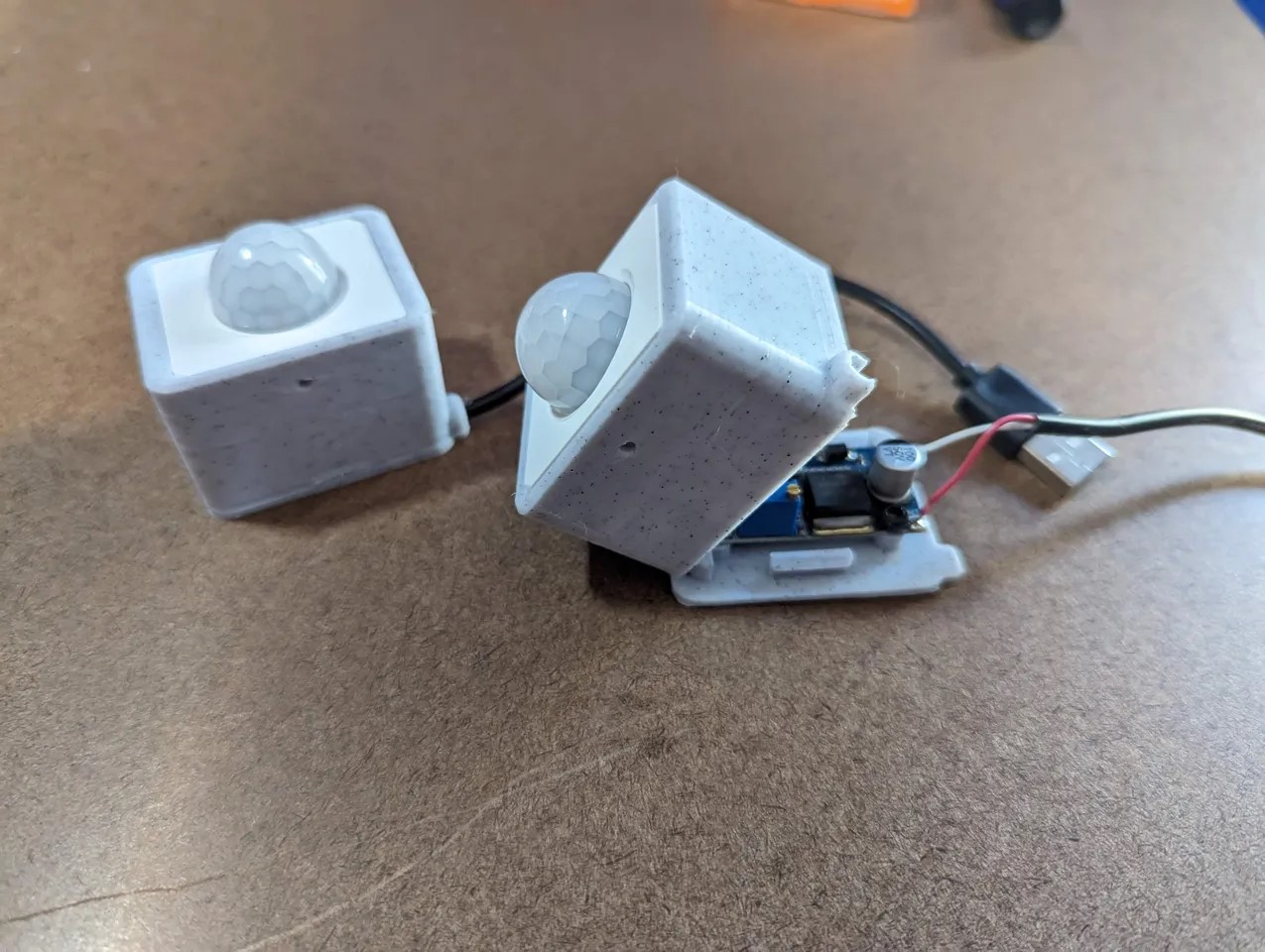Home>Home Security and Surveillance>How To Make Motion Detector Work Through Glass
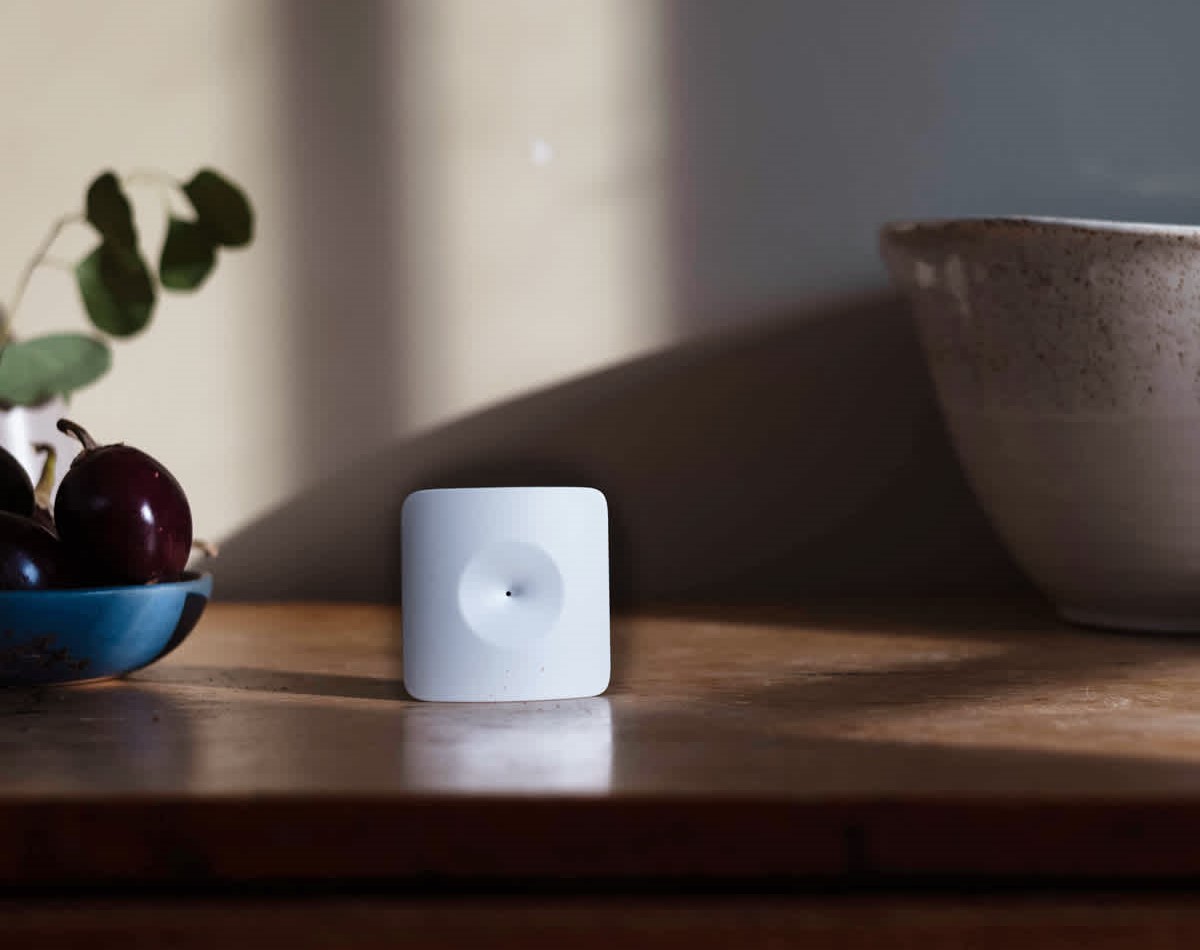

Home Security and Surveillance
How To Make Motion Detector Work Through Glass
Modified: March 24, 2024
Learn how to make your motion detector work effectively through glass with our home security and surveillance tips and tricks.
(Many of the links in this article redirect to a specific reviewed product. Your purchase of these products through affiliate links helps to generate commission for Storables.com, at no extra cost. Learn more)
Introduction
Welcome to our comprehensive guide on how to make motion detectors work through glass. Motion detectors play a crucial role in home security and surveillance systems, helping to keep your property safe and protected from potential intruders. However, when it comes to detecting motion through glass, there can be some challenges that need to be addressed.
Glass poses a unique obstacle for motion detectors as it can reflect, refract, and absorb motion waves, making it difficult for traditional detectors to accurately detect movement. This becomes a significant concern for those who have windows, glass doors, or skylights in their homes that they want to protect. Thankfully, there are various techniques and methods that can be employed to overcome these challenges and enhance the effectiveness of motion detectors when working through glass.
In this article, we will guide you through the understanding of motion detectors, the challenges associated with glass detection, and provide five practical methods to make motion detectors work effectively through glass. By implementing these strategies, you can ensure that your home security system continues to maintain its effectiveness, even with the presence of glass barriers.
Key Takeaways:
- Overcoming glass barriers for motion detectors is crucial for home security. Adjust sensitivity, use dual technology detectors, and consider external sensors to ensure accurate detection through glass.
- Advanced glass detection technology enhances motion detector accuracy. Proper placement and regular maintenance are essential for optimal performance.
Read more: How To Make A Motion Detector
Understanding Motion Detectors
Before we dive into the intricacies of making motion detectors work through glass, it’s essential to have a clear understanding of how these devices function. A motion detector is an electronic sensor that is commonly used in home security systems to detect movement within a specific area. When motion is detected, the detector sends a signal to the security system, alerting homeowners to potential intrusions.
Motion detectors typically operate based on two types of technologies: passive infrared (PIR) and microwave. PIR sensors detect changes in infrared radiation, such as body heat, while microwave sensors emit and receive microwave signals to detect movements. Some motion detectors utilize both technologies to increase accuracy and minimize false alarms.
When it comes to detecting motion through glass, the primary challenge lies in the way glass reflects or absorbs motion waves. Glass can act as a barrier that attenuates the infrared or microwave signals. This results in reduced sensitivity and potential false alarms. Therefore, it is crucial to employ specific techniques and methods to help motion detectors overcome these challenges.
Now that we have a basic understanding of motion detectors and the obstacles they face with glass, let’s explore the specific challenges associated with glass detection and how to address them effectively. By implementing these strategies, you can ensure that your motion detectors perform optimally even with glass barriers and enhance the overall security of your property.
Challenges with Glass Detection
Glass detection poses unique challenges for motion detectors due to the nature of this transparent material. When it comes to detecting motion through glass, there are several obstacles that can hinder the effectiveness of the detectors. Here are some common challenges associated with glass detection:
- Reflection: Glass can reflect infrared or microwave signals, causing the motion detector to interpret the reflection as movement. This can lead to false alarms and decreased accuracy.
- Refraction: When motion waves pass through glass, they can refract or bend, altering the path of the signal. This can result in distorted or weakened signals, making it challenging for the detector to accurately sense motion.
- Absorption: Glass can absorb or attenuate infrared or microwave signals, reducing the sensitivity of the motion detector. This can result in decreased range and difficulty in detecting motion through the glass surface.
- Multiple Panes: Some windows have multiple panes of glass, which can further interfere with motion detection. Each additional glass layer adds more complexity in terms of reflection, refraction, and absorption.
These challenges can significantly impact the performance of motion detectors when it comes to detecting motion through glass. However, there are effective techniques and methods that can be employed to overcome these obstacles and enhance the reliability and accuracy of the detectors.
In the upcoming sections, we will explore five practical methods to make motion detectors work effectively through glass. By implementing these strategies, you can optimize the performance of your home security system and ensure that your property remains well-protected.
Techniques to Make Motion Detectors Work Through Glass
When it comes to making motion detectors work effectively through glass, there are several techniques and methods that can be employed. These strategies aim to address the challenges of reflection, refraction, absorption, and multiple glass panes. By implementing these techniques, you can enhance the performance and reliability of your motion detectors. Here are five effective methods:
- Adjusting Sensitivity Levels: One way to improve motion detection through glass is by adjusting the sensitivity levels of the detectors. Most motion detectors allow you to adjust the sensitivity to suit the environment they are installed in. By fine-tuning the sensitivity, you can reduce the chances of false alarms caused by reflections or weak signals.
- Using Dual Technology Detectors: Dual technology detectors combine the advantages of both passive infrared (PIR) and microwave technologies. By utilizing both technologies, these detectors provide enhanced accuracy and reliability in detecting motion through glass. Dual technology detectors are particularly useful in reducing false alarms caused by reflections or disturbances in the infrared spectrum.
- Installing External Sensors: Another effective method is to install external sensors on the outer side of the glass surface. These sensors can detect motion outside the glass and send a signal to the motion detectors. By utilizing external sensors, you can bypass the challenges posed by glass obstruction and improve motion detection accuracy.
- Placing the Detector at Optimal Location: Proper placement of the motion detector is crucial when it comes to glass detection. Aim to install the detector at a position where it has a direct line of sight to the area you want to monitor. This will minimize the impact of reflections and refractions, allowing for more accurate motion detection through the glass.
- Utilizing Advanced Glass Detection Technology: Advanced glass detection technology has been developed specifically to address the challenges posed by glass barriers. These detectors utilize advanced algorithms and signal processing techniques to overcome obstacles like reflection and absorption. Investing in motion detectors with advanced glass detection technology can significantly improve detection accuracy.
By implementing these techniques, you can optimize the performance of your motion detectors when working through glass. It’s important to note that the effectiveness of these methods may vary depending on the specific setup and components used. It’s recommended to consult with a professional security system provider to ensure the best results for your home security system.
Method 1: Adjusting Sensitivity Levels
Adjusting the sensitivity levels of your motion detectors is a simple yet effective method to improve motion detection through glass. Most motion detectors come with adjustable sensitivity settings, allowing you to customize their response to motion within the monitored area. By fine-tuning the sensitivity levels, you can reduce false alarms caused by reflections and weak signals while still maintaining reliable detection.
Here’s how you can adjust the sensitivity levels of your motion detectors:
- Read the User Manual: Start by referring to the user manual of your motion detector. It will provide specific instructions on how to adjust the sensitivity settings. Familiarize yourself with the manufacturer’s guidelines before making any changes.
- Access the Controls: Most motion detectors have control switches or buttons that allow you to change the sensitivity. These controls may be located directly on the device or accessible through a control panel or mobile app if you have a more advanced security system.
- Start at Default: If you’re unsure of the ideal sensitivity level, it’s recommended to start with the default setting provided by the manufacturer. This will serve as a baseline for testing and adjustments.
- Test Different Settings: Test the motion detector at different sensitivity levels to find the optimal setting for your specific environment. Gradually increase or decrease the sensitivity and monitor the detection performance. Pay attention to both false alarms and missed detections.
- Consider External Factors: Take into account any external factors that may affect the sensitivity, such as nearby sources of heat or movement. Adjust the sensitivity accordingly to minimize false alarms caused by these factors.
- Regular Maintenance: Finally, periodically review and adjust the sensitivity levels as needed. Changes in the environment, such as seasonal variations in temperature or foliage, may require recalibration to ensure accurate detection.
By adjusting the sensitivity levels of your motion detectors, you can optimize their performance when working through glass. Finding the right balance between sensitivity and stability is key to reducing false alarms caused by reflections and enhancing the system’s overall reliability.
To make a motion detector work through glass, try adjusting the sensitivity settings to a higher level. You can also try placing the detector closer to the glass or using a different type of motion detector designed to work through glass.
Read more: How Does Motion Detector Work
Method 2: Using Dual Technology Detectors
When it comes to improving motion detection through glass, one effective method is to utilize dual technology detectors. Dual technology detectors combine the advantages of both passive infrared (PIR) and microwave technologies to enhance accuracy and reliability in detecting motion.
Here’s how dual technology detectors work and how you can benefit from using them:
- Combining PIR and Microwave: Dual technology detectors employ a combination of PIR and microwave sensors. The PIR sensor detects changes in infrared radiation, such as body heat, while the microwave sensor emits and receives microwave signals to detect motion. By using both technologies, these detectors can provide more reliable and accurate motion detection.
- Improved Accuracy and False Alarm Reduction: The dual technology approach helps overcome the limitations and challenges associated with glass detection. The PIR component is excellent at detecting human heat signatures, while the microwave component is less affected by glass barriers and reflections. This combination results in improved accuracy and reduced false alarms caused by glass obstruction.
- Adjustable Sensitivity and Settings: Dual technology detectors often offer adjustable sensitivity settings. This allows you to fine-tune the detectors to your specific environment and minimize false detections caused by environmental factors or minor movements beyond the glass surface.
- Compatibility with Existing Systems: Dual technology detectors are typically compatible with most standard security systems. This makes them a convenient upgrade option for homeowners who already have existing motion detectors installed.
- Installation Considerations: When installing dual technology detectors, it’s essential to follow the manufacturer’s guidelines and recommendations. Proper placement of the detectors, at an optimal height and angle, is crucial for their effectiveness. Refer to the user manual or consult with a professional technician for best practices.
By utilizing dual technology detectors, you can significantly enhance the accuracy and reliability of your motion detection system when working through glass barriers. The combination of PIR and microwave technologies helps overcome the challenges of glass detection and provides improved performance in home security and surveillance applications.
Method 3: Installing External Sensors
To overcome the challenges of glass detection and improve motion detection accuracy, another effective method is to install external sensors. These sensors are placed on the outer side of the glass surface and can detect motion occurring outside the glass. By utilizing external sensors, you can bypass the obstacles posed by glass barriers and enhance the overall performance of your motion detectors.
Here’s how you can benefit from installing external sensors:
- Bypassing Glass Obstruction: By placing sensors outside the glass, you eliminate the interference caused by reflections, refractions, and absorption. This allows for clearer and more accurate motion detection, as the sensors can directly monitor movement without being affected by the glass surface.
- Increased Detection Range: External sensors provide an extended detection range, as they can monitor a larger area beyond the glass. This can be particularly beneficial when you have windows or glass doors that cover a wide field of view. By covering more ground, you enhance the overall effectiveness of your motion detection system.
- Integration with Existing System: External sensors can be easily integrated into your existing motion detection system. Most security systems offer compatibility with external sensors, allowing for seamless integration and centralized monitoring.
- Reduced False Alarms: External sensors can help reduce false alarms caused by movements beyond the glass surface that would otherwise trigger the internal motion detectors. By focusing on detecting motion outside the glass, you can have a more reliable and accurate motion detection system.
- Installation Considerations: When installing external sensors, it’s essential to position them strategically to cover the desired areas. Consider the height, angle, and field of view of the sensors to ensure comprehensive coverage. Additionally, choose sensors that are weather-resistant and durable to withstand outdoor conditions.
By installing external sensors, you can overcome the challenges posed by glass barriers and significantly enhance the accuracy and reliability of your motion detection system. This method provides a practical solution for areas with extensive glass coverage and improves the overall security of your property.
Method 4: Placing the Detector at Optimal Location
The placement of your motion detector plays a crucial role in its ability to effectively detect motion through glass. By positioning the detector at the optimal location, you can minimize the impact of glass obstruction, reflections, and refractions, and enhance its overall performance. Here are some considerations when placing the detector:
- Line of Sight: Ensure that the motion detector has a clear line of sight to the area you want to monitor through the glass. Avoid placing the detector where it may have obstructed views, such as behind furniture or near curtains. This will help reduce the chances of false alarms caused by weak or distorted signals.
- Distance from the Glass: Opt for a placement that allows the motion detector to be positioned at a reasonable distance from the glass surface. This helps minimize the impact of reflections and refractions, as the detector can receive more direct motion waves rather than signals affected by glass barriers.
- Angle and Coverage: Position the detector at an angle that maximizes the coverage area you want to monitor through the glass. Adjust the angle of the detector to ensure it covers the desired area without any blind spots. Carefully consider the placement to capture motion as effectively as possible.
- Consider Multiple Detectors: If you have large windows or glass doors, consider using multiple motion detectors strategically placed to cover the entire glass surface. This can provide better coverage and minimize the chances of missed detections.
- Regular Testing and Adjustment: Regularly test and adjust the placement of the motion detector to ensure optimal performance. Experiment with different positions and angles to find the most effective configuration for detecting motion through the glass surface.
By placing the motion detector at the optimal location, you can improve its ability to detect motion through glass barriers. Through careful consideration of line of sight, distance from the glass, angle, and coverage, you can enhance the detection accuracy and reliability of your motion detection system.
Method 5: Utilizing Advanced Glass Detection Technology
Advancements in technology have led to the development of specialized motion detectors that incorporate advanced glass detection technology. These detectors utilize sophisticated algorithms and signal processing techniques to overcome the challenges posed by glass barriers. By utilizing motion detectors with advanced glass detection technology, you can significantly enhance the accuracy and performance of your home security system. Here’s how you can benefit from this method:
- Improved Accuracy: Motion detectors with advanced glass detection technology are designed to accurately detect motion through glass barriers. They have algorithms that analyze and filter out false positives caused by reflections, refractions, and other disturbances, ensuring reliable detection.
- Enhanced Sensitivity: These detectors are more sensitive to motion signals and can detect even subtle movements beyond the glass surface. Advanced glass detection technology amplifies the motion waves while minimizing the impact of glass obstruction, resulting in improved sensitivity and range.
- Reduced False Alarms: By specifically targeting and addressing the challenges of glass detection, advanced detectors can significantly reduce false alarms caused by reflections or other environmental factors. This not only enhances the reliability of the system but also provides peace of mind by minimizing unnecessary alerts.
- Compatibility with Existing Systems: Many motion detectors with advanced glass detection technology are designed to be compatible with standard security systems. This means that you can upgrade your existing system with these advanced detectors without the need for a complete overhaul.
- Consultation with Professionals: Implementing advanced glass detection technology may require the assistance of professionals. They can help assess your specific requirements, recommend the most suitable detectors, and ensure proper installation and integration with your security system.
Investing in motion detectors with advanced glass detection technology offers a reliable and effective solution for motion detection through glass barriers. These detectors are specifically designed to tackle the challenges associated with glass obstruction, providing enhanced accuracy, sensitivity, and reduced false alarms.
By utilizing the latest advancements in glass detection technology, you can maximize the effectiveness of your home security system and ensure comprehensive protection for your property.
Conclusion
Motion detectors are essential components of a robust home security and surveillance system. However, detecting motion through glass barriers can pose unique challenges and hinder their performance. This comprehensive guide has provided valuable insights and techniques to overcome these obstacles and make motion detectors work effectively through glass.
We have explored the understanding of motion detectors, the challenges posed by glass detection, and five practical methods to enhance their effectiveness. By adjusting sensitivity levels, using dual technology detectors, installing external sensors, placing detectors at optimal locations, and utilizing advanced glass detection technology, you can optimize the performance of your motion detectors and improve the security of your property.
By adjusting sensitivity levels, you can fine-tune the detectors to reduce false alarms caused by reflections or weak signals. Dual technology detectors combine the advantages of PIR and microwave sensors, enhancing accuracy and reliability. Installing external sensors bypasses glass obstruction and extends the detection range. Placing the detector at an optimal location ensures a clear line of sight and minimizes the impact of glass barriers. Utilizing advanced glass detection technology yields improved accuracy, sensitivity, and reduced false alarms.
When implementing these techniques, it is essential to consider the specific requirements of your environment, consult with professionals if needed, and regularly test and adjust the system as necessary. By doing so, you can ensure your motion detectors work seamlessly through glass barriers, providing reliable and accurate detection.
Remember, home security is a multifaceted approach, and motion detectors are just one aspect of a comprehensive system. Consider integrating them with other security measures such as video surveillance, access control, and alarm systems for maximum protection.
Don’t let glass barriers compromise the effectiveness of your motion detectors. Implement the techniques outlined in this guide, stay informed about advancements in technology, and keep your home security system up to date. With proper setup and configuration, your motion detectors will continue to play a crucial role in keeping your property safe and secure.
Frequently Asked Questions about How To Make Motion Detector Work Through Glass
Was this page helpful?
At Storables.com, we guarantee accurate and reliable information. Our content, validated by Expert Board Contributors, is crafted following stringent Editorial Policies. We're committed to providing you with well-researched, expert-backed insights for all your informational needs.
